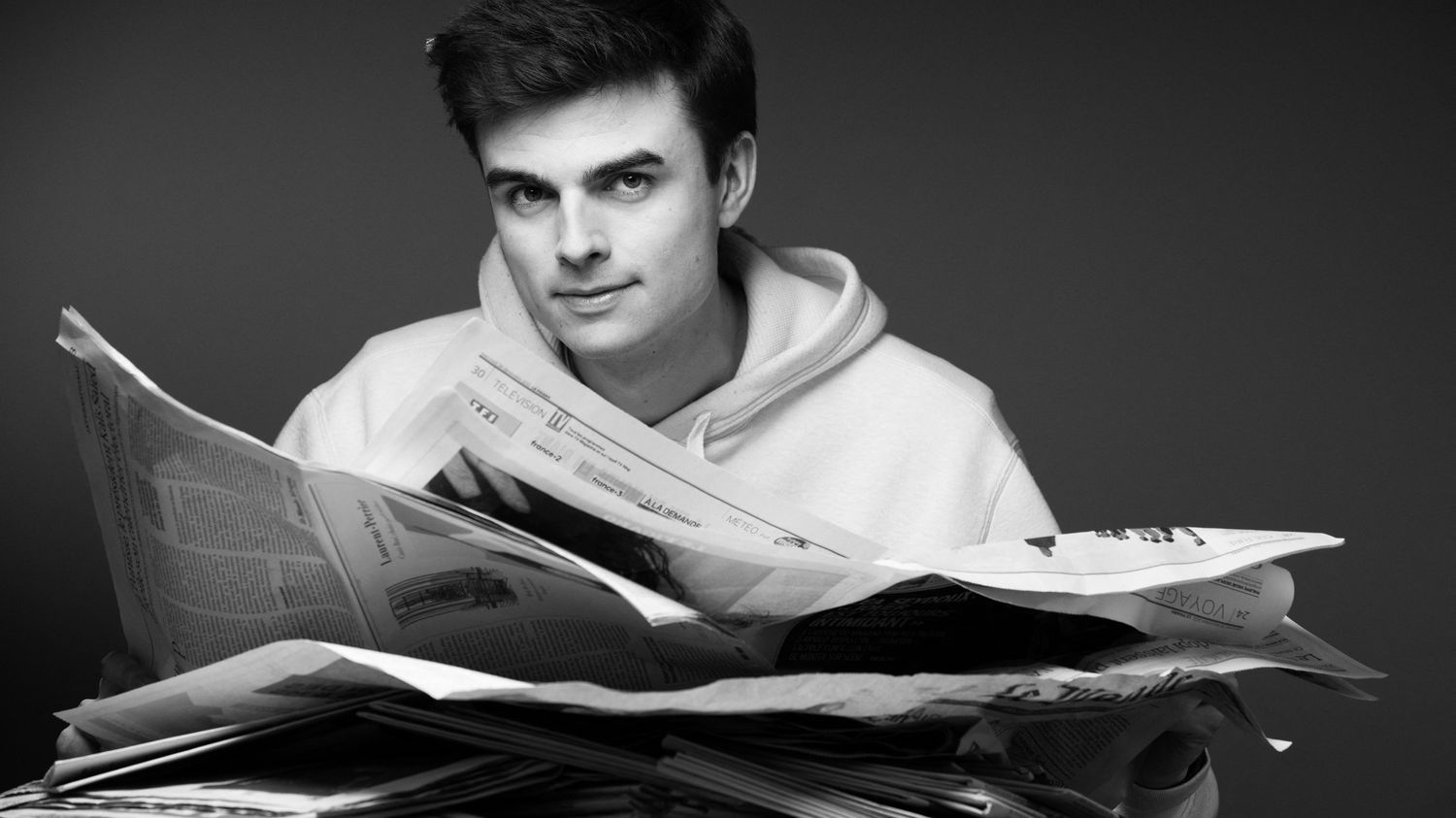This week, the true or false junior high school students wonder behind the scenes of the making of the videos of Hugo Décrypte, the teenagers’ favorite YouTube journalist.
Published
Update
Reading time: 7 min
How does Hugo Travers choose the news he covers on his Hugo Décrypte YouTube channel? How many people work with him? How does he get paid? Wasn’t it too stressful to interview Emmanuel Macron? Students from the André Derain colleges in Yvelines, Jules Ferry in Essonne and Henry Wallon in Seine-et-Marne ask Hugo Travers their questions and he answers them.
On Youtube since 2015, just after high school
Camille asks what Hugo Travers’ professional path was that led him to work on YouTube. The creator of the channel Hugo Décrypte responds that he had wanted to do journalism for a very long time, “From middle school, I was interested in current affairs and I said to myself that maybe I would like to do something in journalism later.” He then launched his YouTube channel in 2015 “because I wanted to do things myself”. And at the same time, “I also studied, after passing my BAC in 2015, I entered Sciences-Po Paris, where I was able to learn a whole bunch of things and it also allowed me to refine my knowledge on political science and history.”
CaseyNeistat inspired me for his Vlog
Nolan wonders if there are people “who inspired Hugo Travers when he started as a social media journalist”.
He answers her “that we don’t create anything from scratch. We are always inspired by people that we will watch, that we will follow, that we will love and who will make us want to do things”. More concretely Hugo Travers explains that there is “notably a YouTuber, in the United States, called CaseyNeistat, who was one of the first YouTubers to really bring a new format for telling stories. That helped me a lot, he said, to try to build formats.” CaseyNeistat is a very popular American YouTuber, known for his vlogs, where he recounts his daily life on video by filming himself. On YouTube alone, he now has 12 million subscribers.
Some 25 people work with Hugo Travers
Nathanaël wonders “how many people work in the Hugo Décrypte team”? In total, 25 people work with him on a daily basis, including around ten journalists with whom he discusses the information and news that he covers on his channel every day.
Mohammed wonders “where does Hugo Travers find all his information”? He replies that there is “formats where we will seek information directly from the field, from personalities that we will question, this can be the case during interviews.” For example, he explains that he has just returned from Ukraine “where I had an interview with President Volodymyr Zelensky.” It can also be reporting formats, Hugo Travers specifies that “is going to South Korea, to do reports that we will soon be able to see on his channel.” Finally there are its video formats “News of the day“, videos which summarize current events. Hugo Travers specifies that for these videos, he and his teams carry out monitoring work with press agencies, such as AFP, or with other media or even researchers or specialists. The challenge then is to summarize all of this, in short, understandable video formats accessible to as many people as possible on social networks.
“Triple-check” rather than being the first on the news
Camille wonders “how do you deal with unverified information or rumors when covering a news story in real time.”
Hugo Travers replied that he “We must not give in to haste, as the temptation always is to try to see the very latest information, the very latest elements and that is where it can become quite dangerous.” Hugo Travers asks his teams “to be very vigilant, to take the time”. “I prefer, he said, that we arrive a little later, that we take a little time to triple-check all the information that we are going to give rather than throwing away the slightest thing that we see passing by, that we hear or that we tell us.”
Remuneration through advertising and commercial collaborations
Hugo Travers explained to us how he makes money with his YouTube channel and his social networks. He explains that “it’s quite simple and it’s quite similar to other media, there is a source of monetization, it’s the ads that you will see before the videos, for example on YouTube.“He states that”these are these few seconds of advertisements that we see at the start of the video or during viewing and it is then a sharing of revenue between YouTube, which therefore broadcasts the video and the content creator, this represents around 50% of our revenue .“There is then “work and content that can be done with brands” Hugo Travers explains to us, “in this case, within the team, it is not the journalists of the team, but it is a team which is dedicated specifically to that, a commercial team which works on some of this content.”
We found some of them on Hugo Décrypte’s Youtube channel and on his social networks. It is clearly indicated that this is a commercial collaboration with this or that brand, as required by law.
The stress of interviews
Clémence wonders if it wasn’t too stressful for Hugo Travers, “to interview Emmanuel Macron” last September. He replies that “obviously it’s stressful because, which is not easy with an interview, it’s a different format, no matter how much you prepare it, no matter how much you spend hours and hours on it, you never feel completely ready and I think it’s quite normal, it’s a bit the same, when you give a presentation in college, there is the issue of the moment, of the live.” The difficulty is to be “well at the moment, you won’t be able to do it again afterwards,” concludes Hugo Travers.
